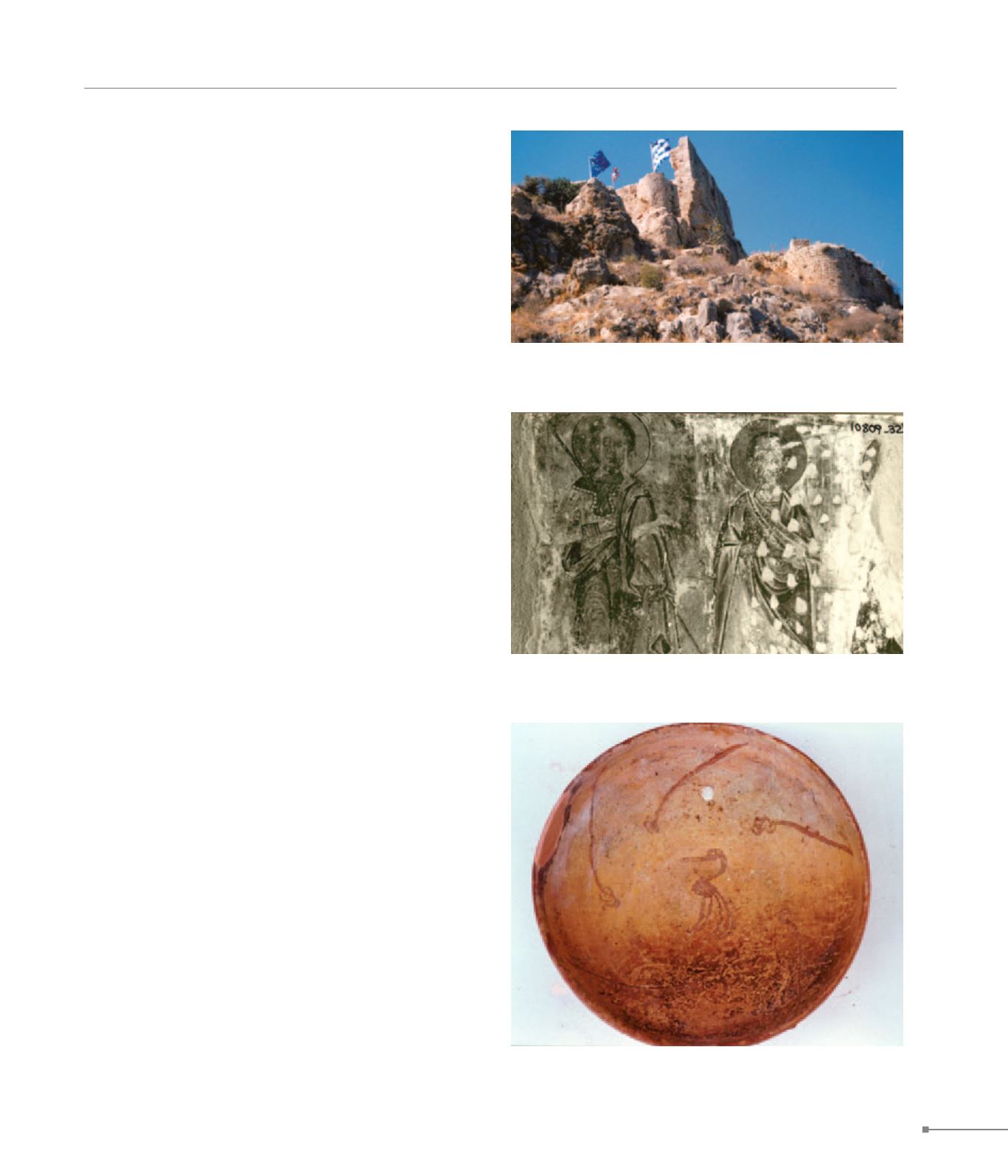
Kasos.
Megisti, Kastellorizo.
THE ISLANDS
413
613. Kastelorizo, Afros, plate from the shipwreck (Καστελόριζο, Αφρός,
πινάκιο από το ναυάγιο)
613. Kastelorizo, Saint Nicholas in-the-castle, wall painting (Καστελόριζο,
Άγος Νικόλαος στο Κάστρο, τοιχογραφία)
613. Kastelorizo, Castel Rosso (Καστελόριζο, Castel Rosso)
612.
Kasos.
There has never been an investigative excavation on Kasos,
so the evidence available is sparse and superficial. There are
remains of two Early Christian basilicas, one located at Em-
porios (2); the basilica’s walls, the baptistery and several ar-
chitectural sculptures are to be found in the environs W of
the existing church. The existence of the second basilica is
attested by a section of a mosaic floor on the site where the
Post-Byzantine church of Archangel Michael (1) is located,
on the road from Fry to Emporios. In addition, architectural
sculptures from the Early Christian period can be seen in the
church of the Three Holy Hierarchs at Arvanitochori (5), in
Aghioi Anargyroi at Panagia (3) and in Aghios Onuphrios at
Poli (4). They may have been transferred from the previously
mentioned basilicas or even indicate the existence of other
basilicas, although this idea has not been investigated.
613.
Megisti, Kastellorizo.
The remains of two basilicas, along with scattered architec-
tural sculptures, found over the years indicate that Kastellorizo
was inhabited in the Early Christian period. A small part of a
mosaic floor and a few small pillars from the altar screen sur-
vive from the basilica that was built on the site of Saint George
Santrapes at Chorafia. From the second basilica, located on
the site of Saint George Vounou, is preserved part of the mo-
saic floor, also used as the catholicon’s floor, as well as Corin-
thian capitals that were placed on the columns to support the
church’s groin vaults.
There is an absence of monuments from the 7th c. to the oc-
cupation of the Knights Hospitaller. The only archaeological
finds that can be dated to the Mid-Byzantine period are an
Aghios Demetrios icon of steatite originating from Palaiokastro
(12th c.), as well as a plethora of pottery (early 13th c.) that
belonged to the cargo of a ship sunk at Cape Afros. An exam-
ple of 14th-15th c. wall-painting is the scene of full-body saints
and of Prophet David from the first fresco layer in Saint Nicho-
las in-the-Castle, which has been removed and is on display
at the archaeological museum. Kastellorizo was fortified with
two castles. Castel Rosso (1) dominated the entrance of the
harbour where the ancient citadel once stood. It was built dur-
ing the Knights’ occupation and included towers, ramparts,
turrets, a cistern, a yard and a drawbridge. Later it underwent
alterations and repairs due to the numerous raids on the is-
land. Today only one tower survives, as well as an exterior
rampart with battlements and rampart walk, where the mu-
seum is housed. Palaiokastro (2), the second castle, is located
at Vigla. It was built in the Hellenistic years and was used dur-
ing the Byzantine period and the Hospitaller rule until the mid-
20th c. Within the castle are Post-Byzantine churches, ruined
houses, cisterns, etc.


